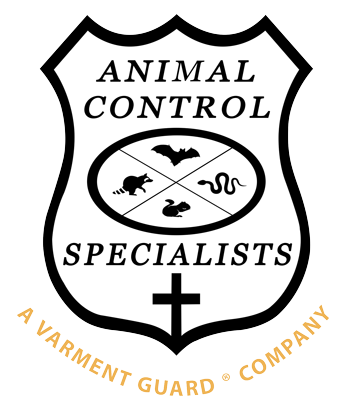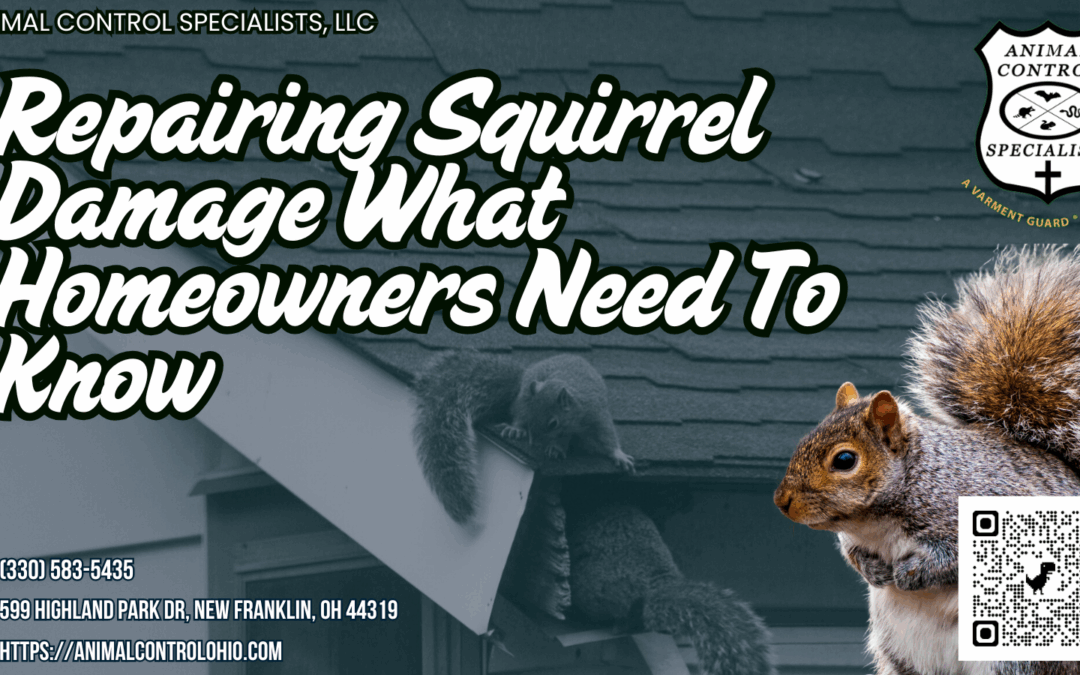Homeowners need to know how to identify and repair squirrel damage effectively. Look for signs like chewed wood, insulation, or squirrel feces. Common areas affected include attics, siding, and roofs. First, assess the damage and secure entry points with materials like steel wool. Use strong materials for repairs, and consider hiring professionals for extensive damage. To prevent future infestations, seal access points and remove food sources. Additionally, keep trees trimmed away from roofs. Understanding these key aspects will help you maintain your home's integrity and safety. There is much more to explore about proper repair techniques and prevention strategies.
Key Article Highlights
- Inspect for signs of damage, such as gnaw marks, droppings, or holes, to assess the extent of the issue.
- Secure entry points with materials like steel wool or caulk to prevent further squirrel access.
- Use appropriate repair materials to maintain structural integrity, including wood, insulation, and roofing materials.
- Remove food sources and seal potential entry points around your home to deter future infestations.
- Consult professionals for extensive damage or safety concerns, especially if fire hazards or legal issues arise.
Identifying Squirrel Damage
Squirrel damage can manifest in various ways around your property. It is important to recognize the signs of this damage early to prevent further issues. One common indication of squirrel activity is the presence of chewed wood or insulation. Squirrels have strong teeth that allow them to gnaw through materials. Look for bite marks or shredded material in your attic or walls, which can signal their presence.
Another way to identify squirrel damage is through droppings. Squirrel feces are small and pellet-shaped, often found near nesting sites. This wildlife sign can help you locate where squirrels are active. Additionally, listen for noises in your attic or walls, especially during dawn or dusk when squirrels are most active.
Observing squirrel behavior can also provide clues. If you see squirrels frequently running along power lines or climbing trees near your home, they may be trying to enter your property. Keeping an eye on these behaviors can help you assess the risk of damage. By identifying these signs early, homeowners can take action to mitigate potential squirrel damage effectively.
Common Areas Affected
Where might homeowners find the most significant effects of squirrel damage? One common area is siding damage. Squirrels can chew through the siding, leading to potential entry points. Roof gaps also present a problem, as they allow squirrels to enter attics or other spaces. These gaps often form when squirrels gnaw at the edges of the roof.
Chimney blockages are another concern. Squirrels may build nests in chimneys, which can create serious fire hazards. Vent obstructions can occur when squirrels invade ventilation systems, disrupting airflow and causing issues with heating and cooling.
In gardens, homeowners may notice garden destruction. Squirrels often dig up bulbs and plants, leading to a loss of landscaping. Additionally, furniture damage can happen when squirrels chew on patio furniture or stored items in sheds.
Repairing Structural Damage
To effectively address structural damage caused by squirrels, homeowners should first assess the extent of the problem. This involves inspecting areas where squirrels may have entered, such as attics, roofs, and walls. Look for signs like gnaw marks, droppings, or holes. Once the damage is assessed, it is vital to secure any entrypoints. Sealing these areas will prevent further access, ensuring that no new damage occurs.
Next, select appropriate repair materials to fix the damaged structures. This may include wood for beams, insulation, or roofing materials. When making repairs, it is essential to maintain structural integrity. This means using strong and durable materials that can withstand similar issues in the future.
Homeowners may also consider consulting with professionals if the damage is extensive or if they are unsure about the repairs. They can provide guidance on the best practices for fixing the damage and ensuring that the structure remains safe and sound. By addressing structural damage promptly and correctly, homeowners can preserve their property and maintain a safe living environment.
Preventing Future Infestations
After repairing any structural damage caused by squirrels, it is important to focus on preventing future infestations. One of the first steps is to seal entry points around your home. Check for gaps and holes in walls, roofs, and foundations. Use materials like steel wool or caulk to close these openings. Additionally, remove food sources that may attract squirrels. Store birdseed, pet food, and trash in secure containers.
Using repellents can also deter squirrels from coming back. Various options are available, including natural sprays or sonic devices. Pruning trees that are close to your home can reduce access points. Keep branches at least six feet away from your roof.
Secure vents and openings to protect your home further. Clearing debris, such as fallen leaves and twigs, can help eliminate hiding spots. If you have a garden, consider installing fencing to keep squirrels out. Finally, encouraging natural predators, like hawks or owls, can help maintain a balanced ecosystem. By taking these steps, you can create a less inviting environment for squirrels and reduce the risk of future infestations.
When to Call Professionals
Determining when to call professionals for squirrel damage can be crucial for effective resolution. Homeowners should consider their safety and the extent of the damage. If you see signs of a significant infestation, it may be time to seek help. Squirrels can create serious issues in your home, such as electrical damage or structural problems.
If you are unsure about the damage or how to repair it, professionals have the tools and knowledge to handle these situations safely. It is also wise to check your insurance coverage. Some policies may cover the costs associated with repairs and removal. Understanding your coverage can ease financial concerns.
Additionally, there are potential legal liabilities when dealing with wildlife. If you attempt to remove squirrels on your own, you could encounter issues with local wildlife laws. Professionals are trained to handle such matters legally and ethically.
Frequently Asked Questions
How Can I Tell if Squirrels Are in My Attic?
Could the scratching sounds above be a sign of an unwelcome visitor? Observing squirrel behavior during the day and conducting a thorough attic inspection at dusk can reveal their presence, ensuring your home remains a sanctuary.
What Materials Are Best for Repairing Squirrel Damage?
When repairing damage caused by squirrels, use durable materials like metal flashing or wire mesh. Consider squirrel-resistant alternatives such as heavy-duty plastic or reinforced wood to prevent future infestations and protect your home effectively.
Do Squirrels Cause Electrical System Issues?
Imagine a mischievous imp meddling with your home's electrical system. Squirrels can cause power outages and even electrical fires by chewing through wires. Proper prevention and monitoring are essential to safeguard your home from such risks.
Can Squirrel Damage Affect Home Insurance Claims?
Squirrel damage can influence home insurance claims. Often considered preventable damage, it may lead to insurance exclusions. Homeowners should understand their policy details to avoid unexpected costs related to wildlife-related damages.
How Long Does It Take to Repair Squirrel Damage?
Imagine a time when homes were built with care. The repair timeline for squirrel damage typically spans one to two weeks, influenced by labor costs and the extent of the damage, ensuring ideal restoration.

